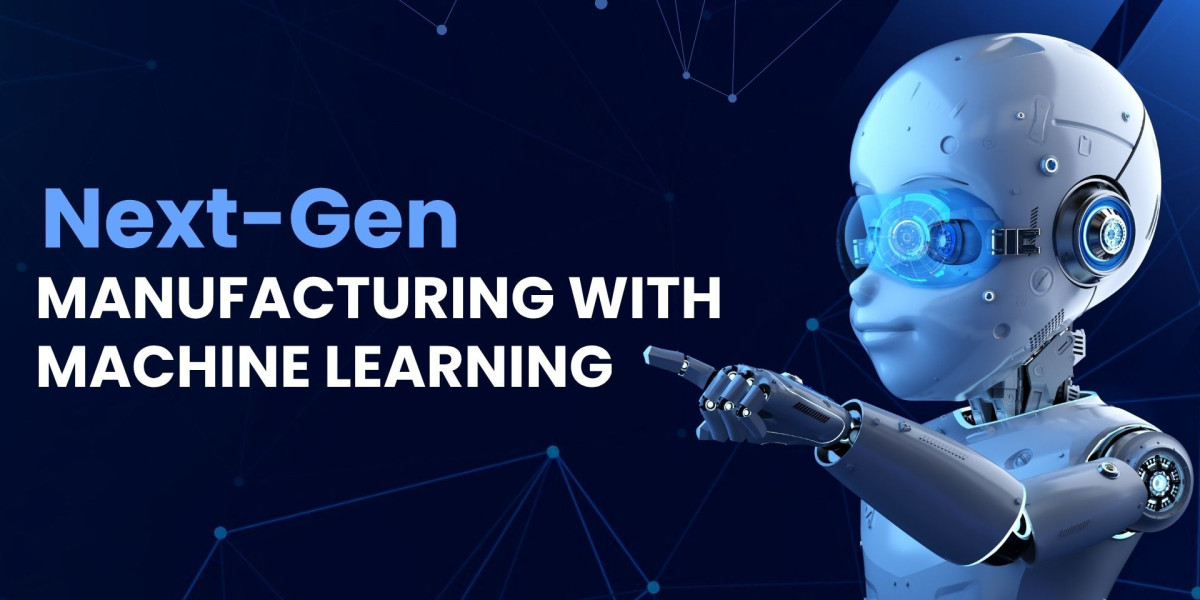Manufacturing is transitioning into a new era, an era fully characterized by data, automated processes, and smart systems. The factory of today incorporates not only the likes of robotic arms assembling vehicles but also AI-enabled sensors that keep an eye on the production lines. machine learning services, a revolutionary technology that allows computers to learn from data, recognize trends, and even make choices without being specifically programmedis in fact the main driver of this change.
Currently, ML applications are being used in the manufacturing industry to help companies increase efficiency, foresee breakdowns, and provide uniform quality across the different lines of production. When combined with Robotic Process Automation (RPA) in manufacturing and process automation, ML is laying down the groundwork for the establishment of the smart factory of the next generation.
Predictive Maintenance: Preventing Downtime Before It Happens
One of the biggest problems in manufacturing is unplanned equipment failure, which is very expensive. The production process can be stopped for a long time, shipments can be delayed, and consequently, there will be losses in revenue. For a long time, maintenance was done according to two modelsreactive (fixing after failure) and preventive (scheduled servicing). But still, both ways sometimes were not cost-effective and efficient at all.
Then, machine learning comes with a more intelligent method of doing things by way of predictive maintenance.
How Predictive Maintenance Works
The ML algorithms work on the collected data from the sensors, IoT devices, and machine logs to analyze the patterns of temperature, vibration, sound, and pressure in order to detect anomalies or indications of wear. This knowledge of the machine will give the engineers the ability to forecast the failures before they happen.
For instance:
There might be a very slight alteration in the vibration pattern of a machine just before the bearing failure occurs.
On the other hand, an increase in the temperature could mean that lubrication is not working properly.
Noise variations might imply imbalance in the motor or misalignment of the gears.
The ML models are very interactive in that they are always learning from the operational data; hence, they are able to predict the Remaining Useful Life (RUL) of the equipment and automatically notify or create maintenance tickets.
Advantages for Business
Minimized Downtime: The maintenance works are planned for the times when the machines are least busy, thus no stopping of production takes place.
Decreased Expenses: Maintenance works will be done only when they are requiredthereby saving on parts, labor, and time.
Decisions Based on Data: Engineers depend on insights that can be acted upon instead of mere conjectures.
Worldwide manufacturers like Siemens, Bosch, and GE have already adopted predictive maintenance via advanced machine learning services, which have resulted in cutting down downtime in some cases by even 50%.
Quality Control: Elevating Accuracy and Stability
In manufacturing, product quality is the primary factor to determine the brand's reputation. A tiny flaw in the materials or the assembly process could result in the product being recalled, a lot of waste, or customers being dissatisfied. The old-fashioned quality controlmanual checking or random batch testingtakes a long time and exposes the process to human mistakes.
Machine learning is introducing a change again in this case.
ML-Powered Quality Inspection
Machine learning, particularly the computer vision techniques of which, is able to identify tiny flaws in items with a speed and precision that is far superior to the human inspectors. The ML models together with the high-resolution camera can evaluate the products in real time, thus only the flawless ones will be packed and sent out.
As an example:
Car manufacturers apply ML techniques to control paint quality, joints, and part alignment.
The manufacturers of electronic devices identify soldering and circuit problems through the use of image recognition.
The mills producing textiles spot flaws in fabric such as incorrect weaving or uneven coloring.
To put it in another way, ML models learn from their predecessors' mistakes and thus they get more accurate, and at the same time, they also get less and less dependent on human intervention.
Advantages for Manufacturers
Higher Accuracy: Human eye cannot detect so even slight defects are considered.
Faster Production: Inspections in real-time eliminate the bottleneck.
Reduced Waste: The early detection of defective units results in savings on material costs.
When process automation tools are integrated, manufacturers are capable of things like automatically eliminating substandard products, tuning machine settings, or calibrating sensorsthus, a quality system with closed loop is created.
RPA in Manufacturing: Enhancing Efficiency Through Automation
Machine learning is all about getting smart and making predictions, whereas RPA is all over the place with digital tasks like reporting, data entry, and updating inventories.
In the case of manufacturing, RPA in manufacturing is a big help for ML during the backend workflow automation:
Entering the predictive maintenance notifications into ERP systems.
Making changes to the supplier database upon inspection for quality.
Automatic generation of compliance and audit reports.
Production changes are scheduled as per the ML forecasts.
In fact, this combination of ML and RPA creates a powerful force of natureintelligent automationwhere ML provides the insights and RPA implements the decisions right away, thereby, maintaining the smooth running of the production lines.
The Future: Data-Driven, Autonomous Manufacturing
The integration of machine learning solutions and automated technology is opening the door to the age of Factory 4.0, which will be characterized by factories mainly operated by themselves, self-optimizing, and consuming less energy.
Recent innovations include:
Edge AI, which allows immediate decision making close to the production site.
Digital twins, which are applied for simulating processes and predicting system performance.
Self-repairing machines that self-adjust their operational deviations.
Conclusion: Building the Smart Factory of Tomorrow
Machine Learning is not merely a thing of the future but a dominating reality in the present manufacturing sector. The industry uses the technology in predictive maintenance that stops breakdowns from occurring and AI quality control, which guarantees perfection, unnoticed.
The organization does machine learning services combined with RPA in manufacturing and process automation which can easily facilitate the creation of a factory that can think, change, and developmatter and then correspond to the data. The future of manufacturing is in the hands of the people who accept intelligence now.







